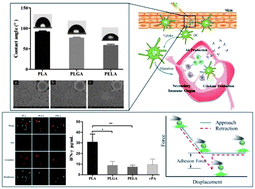Surface hydrophobicity of microparticles modulates adjuvanticity
Abstract
Polymeric microparticles are promising

* Corresponding authors
a
National Key Laboratory of Biochemical Engineering, PLA Key Laboratory of Biopharmaceutical Production & Formulation Engineering, Institute of Process Engineering, Chinese Academy of Sciences, Beijing, PR China
E-mail:
wanglianyan@home.ipe.ac.cn, ghma@home.ipe.ac.cn
b University of Chinese Academy of Sciences, Beijing, PR China
c
Laboratory of Vaccine and Antibody Engineering, Beijing Institute of Biotechnology, Beijing, PR China
E-mail:
xujunjie@sina.com
Polymeric microparticles are promising

 Please wait while we load your content...
Something went wrong. Try again?
Please wait while we load your content...
Something went wrong. Try again?
Y. Liu, Y. Yin, L. Wang, W. Zhang, X. Chen, X. Yang, J. Xu and G. Ma, J. Mater. Chem. B, 2013, 1, 3888 DOI: 10.1039/C3TB20383B
To request permission to reproduce material from this article, please go to the Copyright Clearance Center request page.
If you are an author contributing to an RSC publication, you do not need to request permission provided correct acknowledgement is given.
If you are the author of this article, you do not need to request permission to reproduce figures and diagrams provided correct acknowledgement is given. If you want to reproduce the whole article in a third-party publication (excluding your thesis/dissertation for which permission is not required) please go to the Copyright Clearance Center request page.
Read more about how to correctly acknowledge RSC content.
 Fetching data from CrossRef.
Fetching data from CrossRef.
This may take some time to load.
Loading related content
